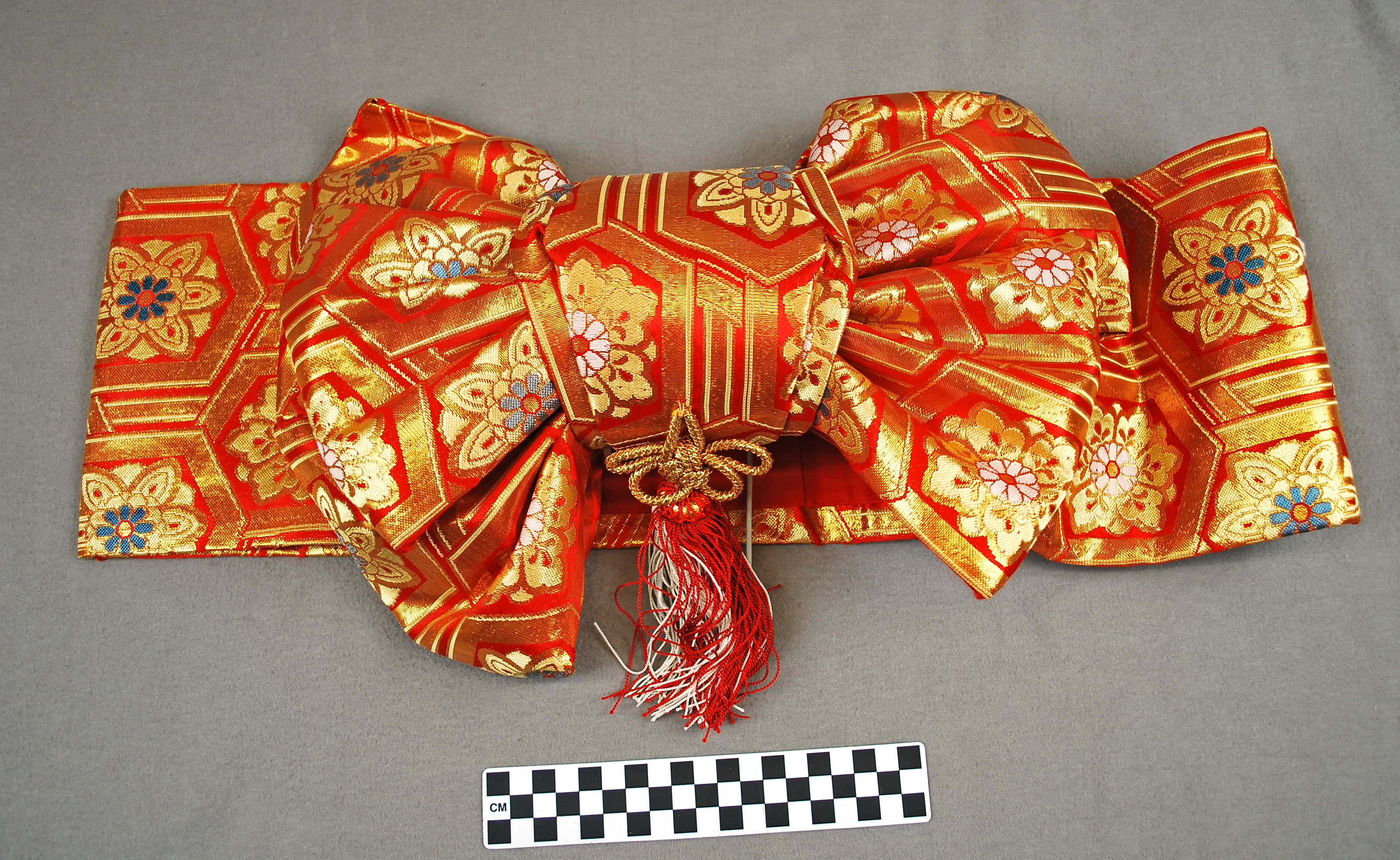This garment is called an obi and it first appeared in Japan during the Heian Period (794-1185). It was first designed as a narrow sash that was used as an undergarment for a women’s kimono. It wasn’t until the Muromachi Period (1392-1573) that women of the samurai class began to wear the obi on the outside of their kimonos tied at the front or to the side. As time went by the obi grew wider and started to be made from silk with simple patterns on them. It wasn’t until the Edo Period (1600-1868) that the obi gained it most recent and modern design. Also during this time the obi became integral to the kimono. While before it was largely a fashion accessory, it now became necessary in order to keep a kimono closed and together. During the early years of the Edo Period women still wore the obi on the front or to the side but it eventually became more popular and practical to wear them in the back. The obi also became much more decorative and elaborate and women began wearing it in many different ways leading to a number of different types of decorative knots.
Today most obi are made in Nishijin, a district in Kyoto, Japan and is one of the most expensive parts to the kimono. It is a common misconception that only Geisha still wear the traditional kimonos and obi but this far from the truth. Kimonos and obi are still an important part of Japanese attire. There are many types of obi but some of the better known types include the maru obi, fukuro obi, and Nagoya obi. The maru obi is usually only worn at weddings. It is a very expensive and heavy type and is the most formal of all the obi. Another type is the fukuro obi, which is less formal than the maru obi but is formal enough that is only worn at ceremonies and festivals. The most commonly worn type today is the Nagoya obi, named after the city of Nagoya, Japan. This obi is designed to be quick to put on, light weight and inexpensive, perfect for more casual wear.
